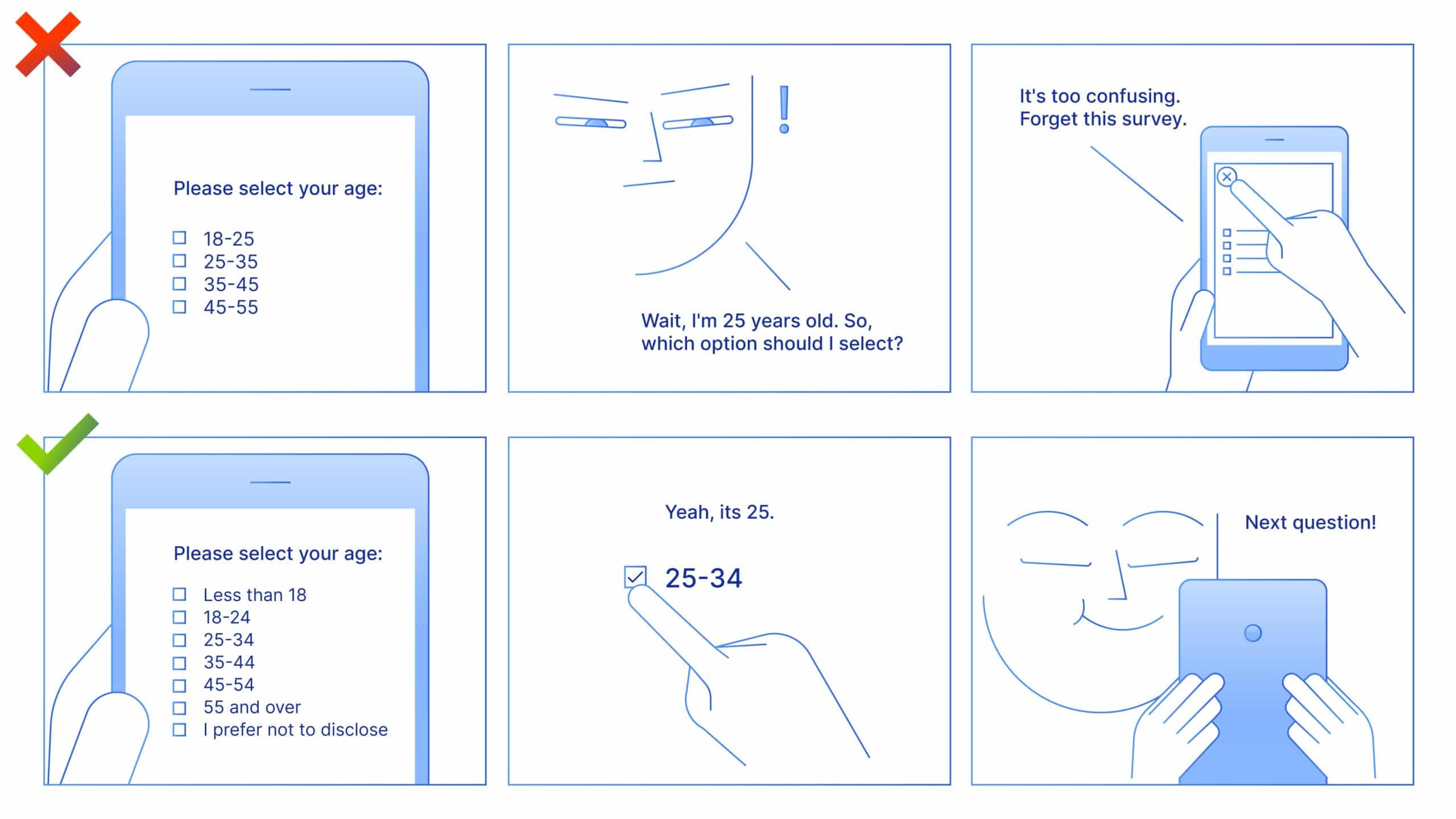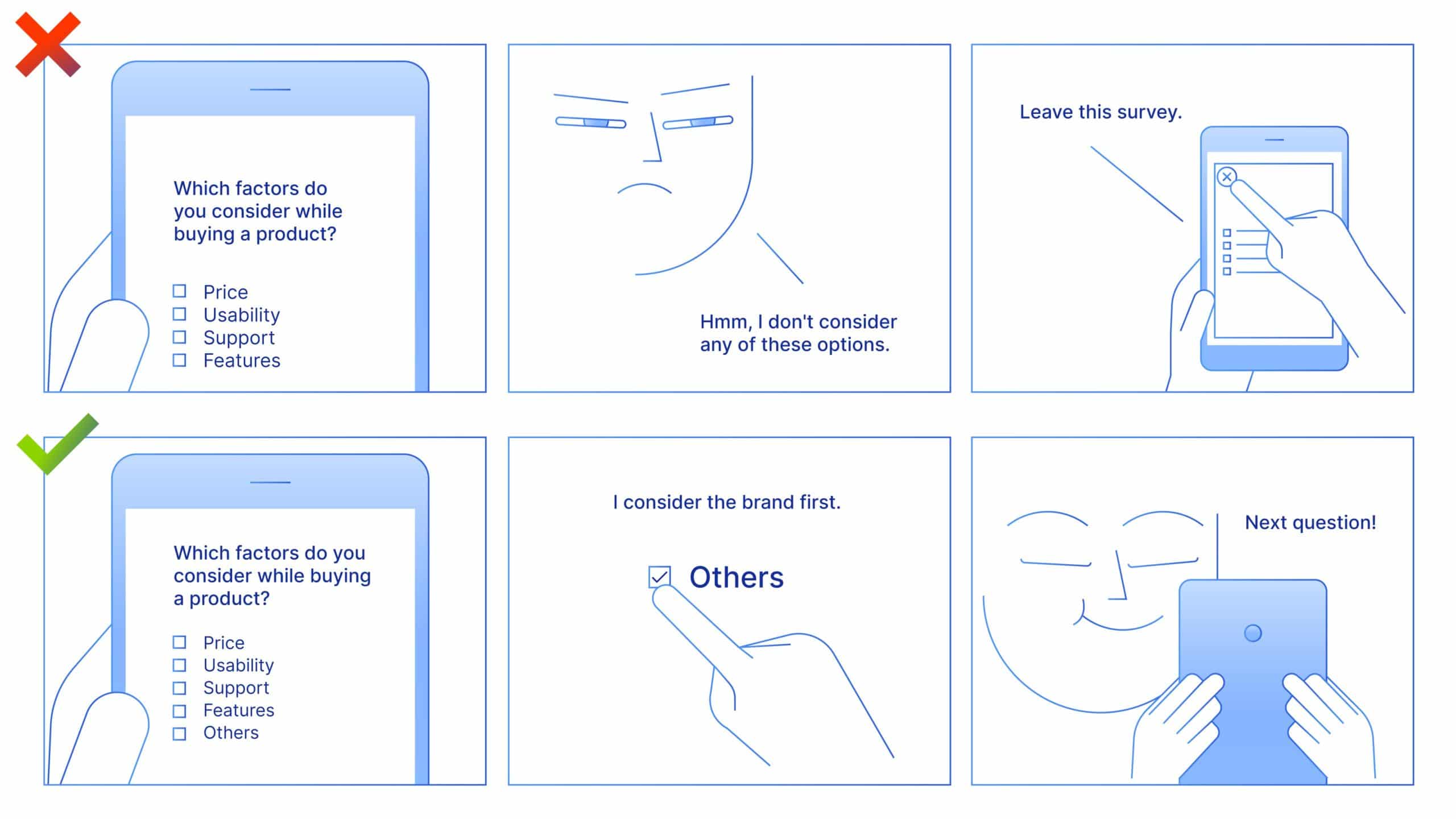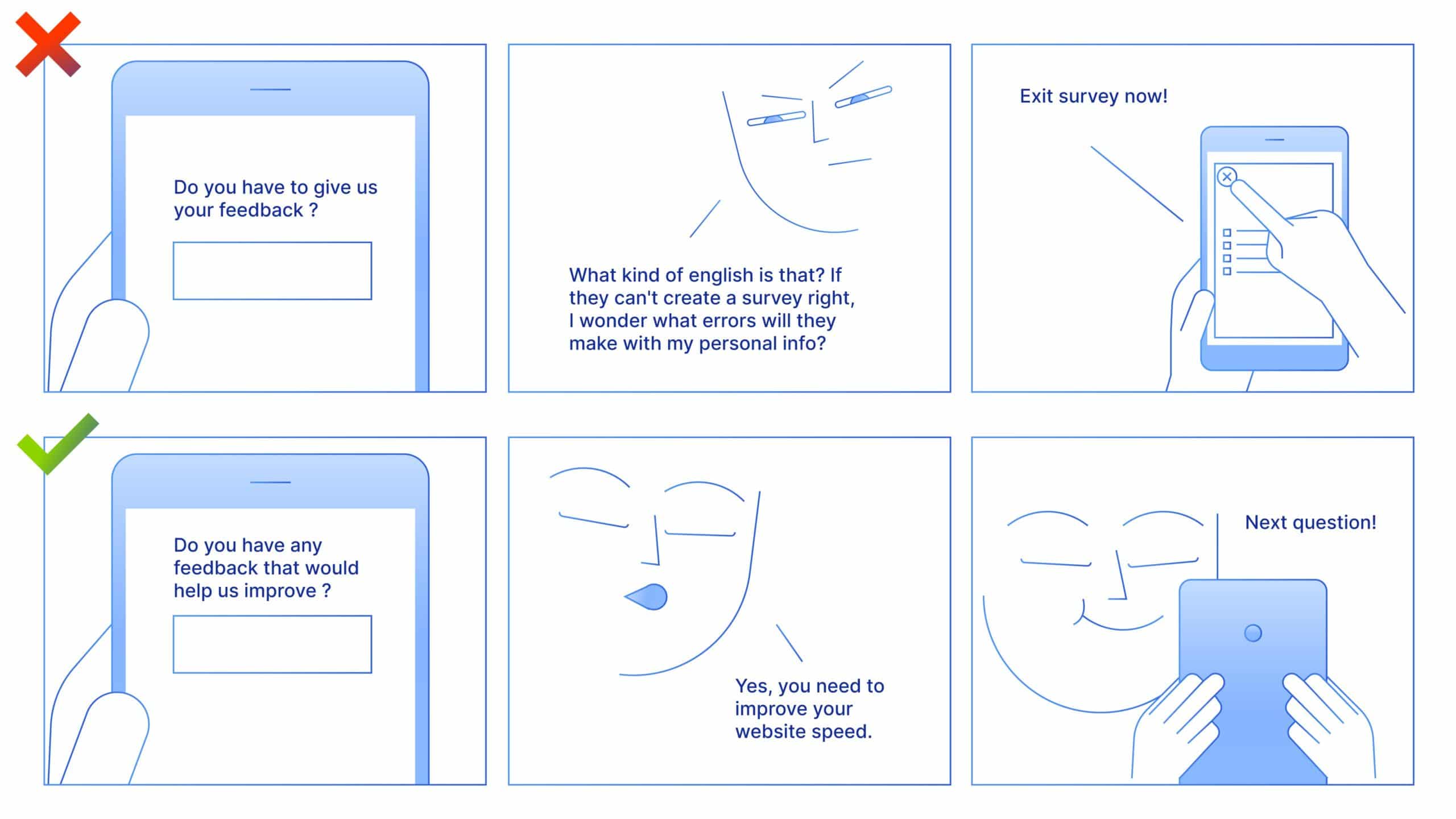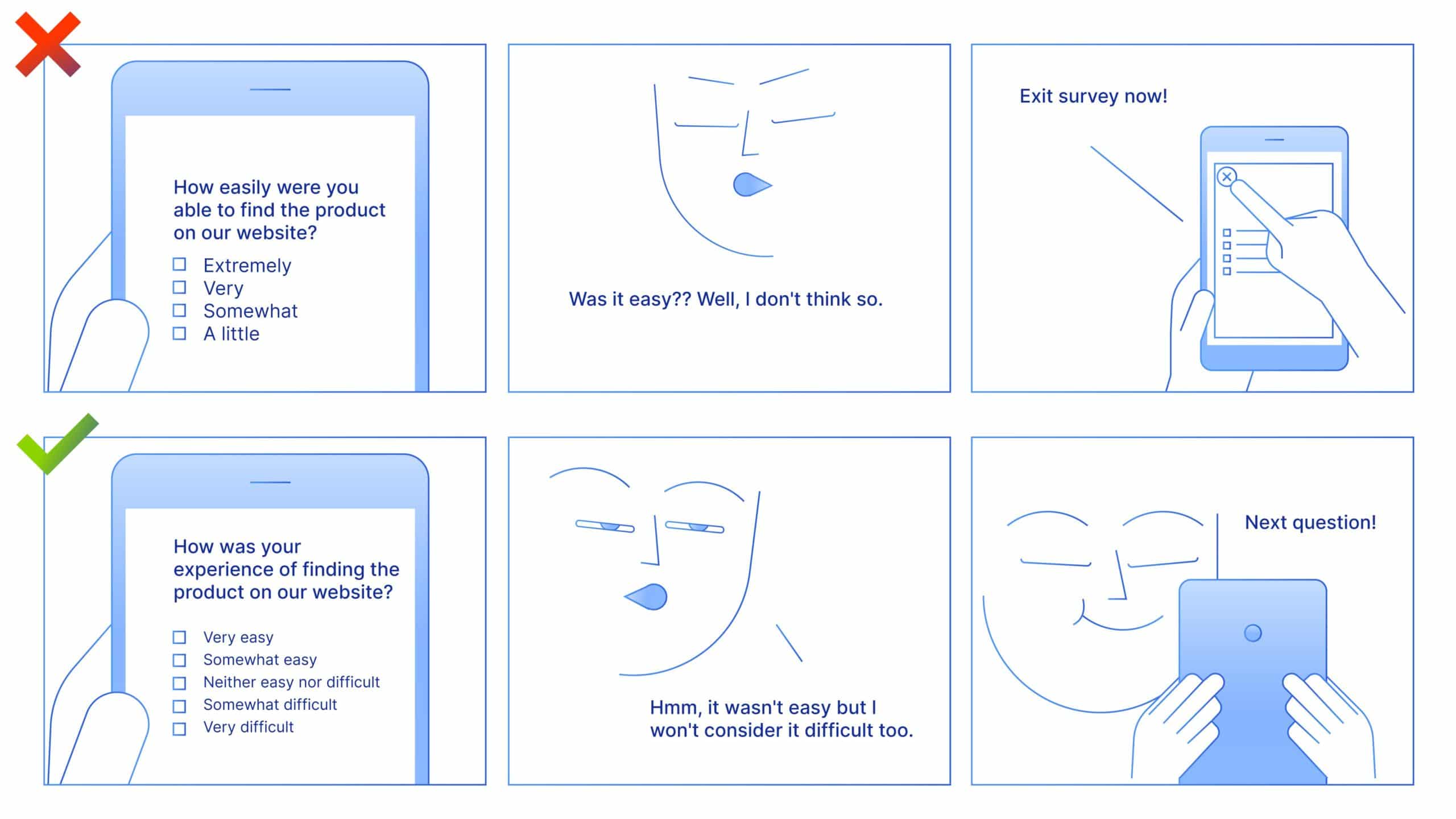As channels for gathering feedback from customers and employees, online surveys play a vital role in the organization’s growth. By gaining insights into how people think, act, or feel, businesses can track their performance, enhance their services, and develop new products too. Whether you’re doing market research, testing an idea, or merely running a poll, an effective online survey is all you need to collect actionable insights.
Try Voxco’s free survey tool to uncover valuable insights into customer behavior
Principles behind great surveys
While surveys can help you foster closer ties with customers or employees, it is important to build surveys that are clear, concise, and engaging. Let’s dive deeper into the principles behind great surveys:
- Surveys are for respondents
On visiting your website, most visitors have some goals in their mind that they want to accomplish. The idea is to offer surveys that are customer-focused so that people don’t find it difficult to answer your questions while working on the tasks at hand. Adding answer options that are collectively exhaustive & mutually exclusive can make your surveys painless for the respondents.


- Surveys reflect your brand
Considered as effective channels of communication between customers and the company, online surveys are the sobering mirrors of the brand that send them. Using impeccable grammar, spelling, and formal tone can help ensure you represent your brand in the best way possible. Also, adding irrelevant topics (that are not related to your products/services) to the survey affects your company standards.

- Clarity and precision are key
Adding context to clarify your survey questions enables respondents to understand what you mean. Stacking multiple aspects in a single question or using terms that are not so precise will make your survey ambiguous. Decoupling concepts in your survey can help you sidestep such pitfalls.

Designing surveys that perform well
To ensure your online survey is suitable for the respondents, you need to analyze the fundamentals of survey design. As your survey’s design can make or break its performance, here are some steps that can ensure your survey design is on point:
- Analyze your objectives
Start by setting up your goals, i.e. what do you want from this survey, how will it add value to your brand? This benchmark will prevent you from losing sight of your survey’s purpose while helping you visualize the results too.
- Set your priorities right
Once you review and finalize your goals, you can shortlist the content and frame up the survey questions accordingly. While setting up a survey, you need to include questions based on priority. Also, it’s important to check if people are comfortable answering each question. - Extract information with the right question types
As respondents are going to interact with your brand through surveys only, it’s essential to include questions that provide the best information. You can use dichotomous (yes/no), rank order, open-ended text, multiple-choice questions as per your choice. - Road-test and Revise
Before you begin with distribution, you should pre-test your survey to discover the required gaps. Getting feedback from a group of testers can help you realize the areas of improvement and make revisions.
Best practices for online surveys
While the popularity of online surveys has propelled people to create surveys for their business, building a successful online survey is not as easy as it seems. Let’s consider some best practices that could help you make the most of your online surveys:
- Keeping it simple
Using extremely wordy or confusing questions can irritate your respondents and they might quit your survey. Adding simple questions that are easy to understand will fetch you accurate results from your clients. - Using close-ended questions
While setting up your online survey, it’s great to include close-ended questions (that have pre-determined answers). These questions are easy to respond and produce quantitative results as compared to open-ended ones which take time to fill out and analyze too. - Utilizing scale questions
Playing a pivotal role in research, scales help to gauge the direction as well as the intensity of your respondent’s opinion. Including a 5 or 7-point response scale with opposite extremities can help you extract detailed information without using open-ended questions. - Backing up your survey
As data loss can occur anytime, it’s recommended to create a backup copy of online surveys and their responses regularly. After you’re done with the backup copy, you can delete old surveys that are not receiving responses anymore.
Increasing your online survey response rates
- Know your customers well
Before you begin with the survey process, it’s important to fully understand your customers. Ensure the correct contact information of your respondents before surveying as it helps to increase the response rate of your surveys. Also, appreciate the customers for their valuable participation. - Value the time of your customers
As most of the customers would not like to engage in surveys that are too long or irrelevant, you need to be considerate of the respondents’ time. By giving your customers an estimated time of survey completion, you can convince them to participate in the surveys. Also, keep the duration of your surveys up to 10 mins only (or 15 mins max). - Use an omnichannel approach
There’s no denying that sending surveys via email is the best way to reach out to respondents. But to pique the interest of your target audience, you can conduct the surveys via phone, or post it over social media channels too. This way you can generate curiosity among your respondents and they will end up completing your survey. You can use Voxco’s omnichannel survey software to reach your respondents anywhere, anytime.

Read more




 English
English
